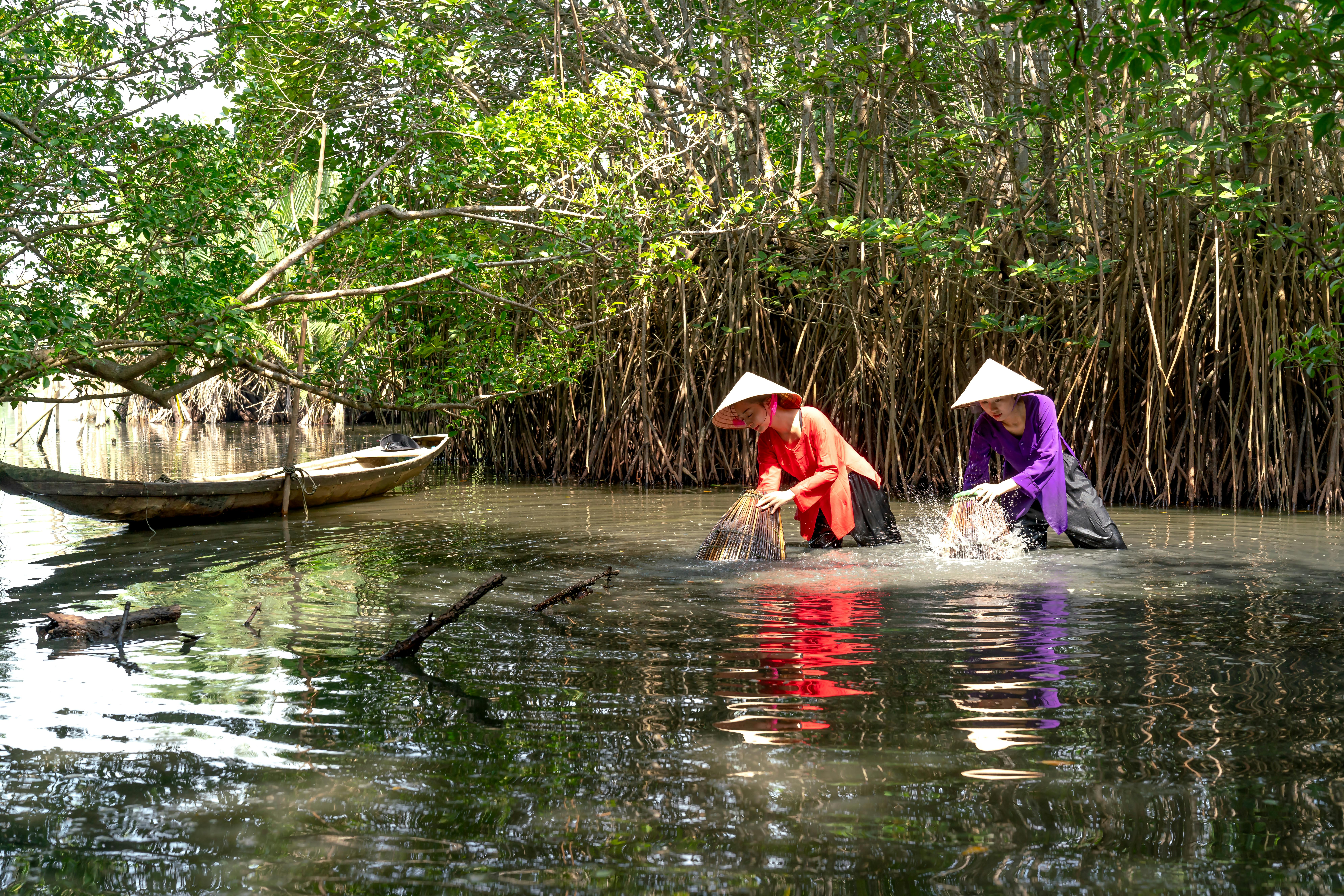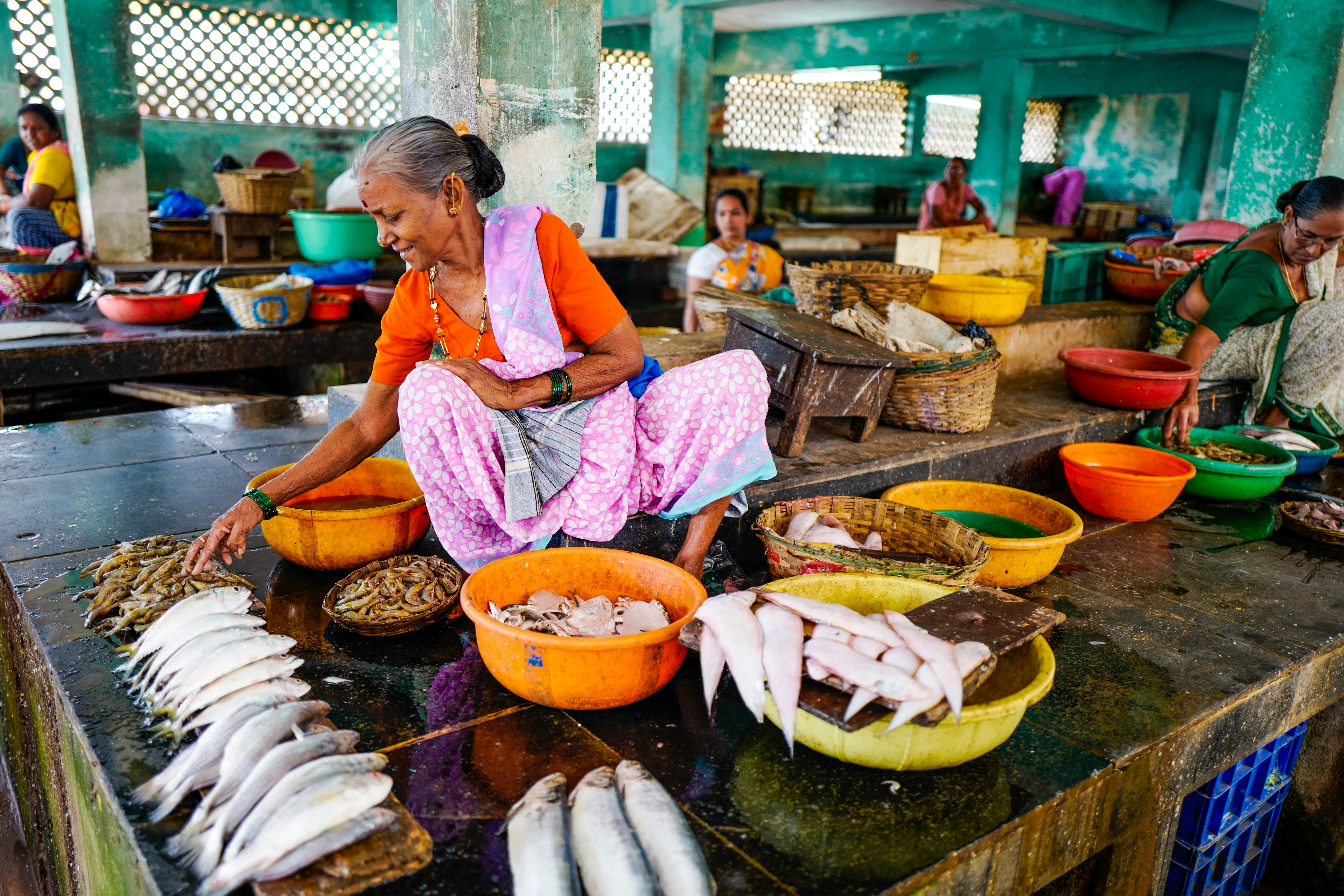Promoting gender equality in the aquaculture industry
Aquaculture is an industry that provides many employment positions around the world. While it is viewed by society as a male activity, many women work in various positions in its supply chain. To be more specific, although many are unaware of it, data coming from FAO’s report on the role of women in the seafood industry show that female workers can be found not only in the farming activities themselves, e.g., in ponds, pens, cages or off-shore establishments but also many post-harvest activities such as the processing, trading and selling, the monitoring and the administration (FAO, 2015). Statistics demonstrate that in 2022, approximately 30% of aquaculture staff was female (FAO, 2022).
Gender and aquaculture: The need to empower women in aquaculture.
Gender equality in food and agriculture systems is essential for adopting inclusive and sustainable practices. New Sustainable Development Goals (SDGs), particularly SDG 5 on gender equality, clearly highlight the link between gender equity and how we tackle poverty and famine (Kruijssen et al., 2018). Thus, gender equity is vital for diversifying seafood production and ensuring blue justice in the seafood sector (McClenachan & Moulton, 2022)
Women, as hidden figures in the fish farming industry
Historically and over the years, fish farming activities involved men and women in various diverse roles. As the sector became more industrialized and open to international trade, the role of women became invisible (Coles et al., 2015). Even though aquaculture is such a dynamic and fast-growing sector, it still needs to be improved when it comes to its social perspective. The sector “suffers” from gender inequalities expressed through an insufficient allocation of opportunities, benefits, and wages (Brugere et al., 2023). A study conducted in Maine, USA, showcased the fact that the female workforce is integrated mainly into small-scale lower-value activities such as seaweed farming (e.g., kelp farms) and not in higher-value activities of the area such as the oyster industry (McClenachan & Moulton, 2022). Another study using mainly Asian countries as case studies suggested that this gender inequality in aquaculture derives mainly from insufficient disaggregated data, the lack of awareness and representation of women in the sector, and the cultural biases and perceptions regarding the involvement of women in fish farming (Bosma et al., 2019). Apart from that, the field of aquaculture, among other expertise, lacks gender experts, too, since the majority of the workforce in the value chain have a background in either biology or fisheries.

Furthermore, the so-called “aquaculture interventions” that include projects, programs, and policies that aim at increasing the industry’s productivity, income, and equality also face similar cultural and social barriers that affect the effectiveness of their interventions.
From the above, it becomes evident that we need to empower and support women in the fish farming industry. By participating in the fish farming industry, women can play an essential role in the security of food systems and the financial development and stability, especially in coastal areas. However, how we can achieve that?
How can we achieve women’s empowerment in aquaculture?
While some might question the term ‘women empowerment’, UN Women (2022) has suggested ways to achieve it. These suggestions are:
- Support women smallholders: Women’s aquaculture enterprises are typically small in scale and turnover and often combined with other activities or are part of a family business. Also, women in small-scale aquaculture are often perceived as poor and usually unrecognized, under or unpaid. However, small-scale farms usually adopt more sustainable practices and represent a viable alternative to generate income while promoting food security (Salazar et al., 2018; Williams et al., 2010).
- Ensure financial security: Gender equity also means equal access to financial resources, according to Kvaroy Arctic, which supports females in aquaculture through scholarships, underlines that apart from income inequalities, women business owners do not have the same access to equipment and feeds. Women can contribute to household earnings and nutrition, so gender equality through balanced incomes is essential.
- Support female education and leadership: Women should be encouraged to build their management, leadership, and entrepreneurial skills and have access and equal opportunities to proper education and training.
- Promote women’s health: Many jobs within the aquaculture sector are physical and are connected with hazards, injuries, or diseases (Cavalli et al., 2019). When women have equal access to healthcare, they are better positioned to enter the workforce and contribute to the economy.
- Fund women’s organizations: Women’s organizations can provide support, information, and opportunities for communication and collaboration. A notable mention of “NOWA – Network of Women in Aquaculture” (https://www.linkedin.com/company/nowa-network-of-women-in-aquaculture/ ), a network that was established in 2023 by female aquaculture professionals to support and promote women in the aquaculture industry.
In conclusion, prioritizing gender equality within the dynamic and rapidly growing aquaculture sector is crucial. Women’s empowerment is at the forefront of the policy agenda, ensuring that women in aquaculture will have equal access to financial, natural, training, and market resources. By actively supporting women empowerment initiatives and addressing the specific needs of women in aquaculture, we pave the way for a more inclusive and thriving future for the entire sector.
Literature:
Bosma, R. H., Nguyen, T. D., Calumpang, L. M., & Carandang, S. A. (2019). Gender action plans in the aquaculture value chain: what is missing? In Reviews in Aquaculture (Vol. 11, Issue 4, pp. 1297–1307). Wiley-Blackwell. https://doi.org/10.1111/raq.12293
Brugere, C., Bansal, T., Kruijssen, F., & Williams, M. (2023). Humanizing aquaculture development: Putting social and human concerns at the center of future aquaculture development. In Journal of the World Aquaculture Society (Vol. 54, Issue 2, pp. 482–526). John Wiley and Sons Inc. https://doi.org/10.1111/jwas.12959
Cavalli, L., Jeebhay, M. F., Marques, F., Mitchell, R., Neis, B., Ngajilo, D., & Watterson, A. (2019). Scoping Global Aquaculture Occupational Safety and Health. Journal of Agromedicine, 24(4), 391–404. https://doi.org/10.1080/1059924X.2019.1655203
Coles, A., Gray, L., & Momsen, J. (2015). The Routledge Handbook of Gender and Development. Routledge.
FAO. (2015). The role of women in the seafood industry. www.globefish.org
FAO. (2022). The state of world fisheries and aquaculture 2022.
Kruijssen, F., McDougall, C. L., & van Asseldonk, I. J. M. (2018). Gender and aquaculture value chains: A review of key issues and implications for research. Aquaculture, 493, 328–337. https://doi.org/10.1016/j.aquaculture.2017.12.038
Kvaroy Arctic Webpage: https://www.kvaroyarctic.com/blog/the-importance-of-investing-in-women-in-aquaculture
McClenachan, L., & Moulton, A. (2022). Transitions from wild-caught fisheries to shellfish and seaweed aquaculture increase gender equity in Maine. Marine Policy, p. 146. https://doi.org/10.1016/j.marpol.2022.105312
Salazar, C., Jaime, M., Figueroa, Y., & Fuentes, R. (2018). Innovation in small-scale aquaculture in Chile. Aquaculture Economics and Management, 22(2), 151–167. https://doi.org/10.1080/13657305.2017.1409293
Williams, M. J., Agbayani, R., Bhujel, R., Bondad-Reantaso, M. G., Brugère, C., Choo, P. S., Dhont, J., Galmiche-Tejeda, A., Ghulam, K., Kusakabe, K., Little, D., Nandeesha, M. C., Sorgeloos, P., Weeratunge, N., Williams, S. J., & Xu, P. (2010). Sustaining aquaculture by developing human capacity and enhancing opportunities for women Expert Panel Review 6.3.










































































